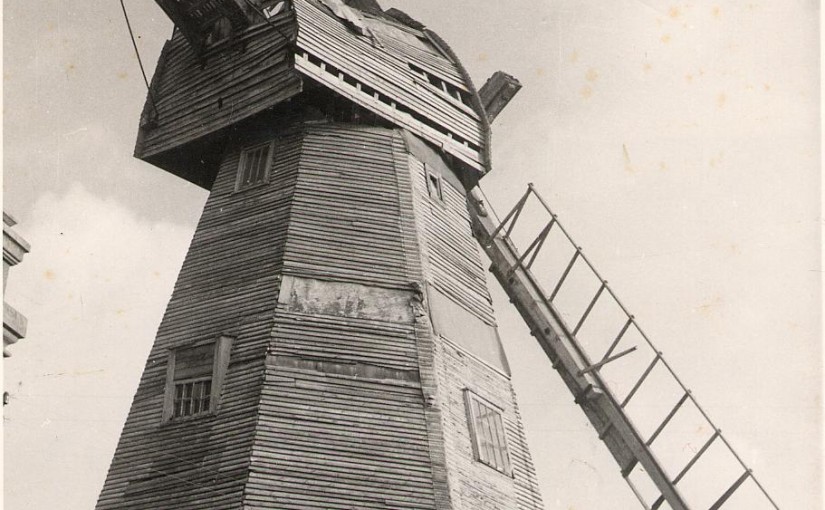Draper’s Mill, also known as Tivoli Mill and Silverhill Mill took its name from the Draper family who ran it for several decades. Draper’s was a smock windmill standing on the site of a previous mill which burned down in 1867. (Some reports suggest 1865) This new larger mill was rebuilt by Agricultural Engineers from Catsfield for the Draper family around 1866 (possibly as late as 1868) and was in use until 1941.
A well known and loved landmark at Silverhill it stood for 100 years until July 1966, when it was demolished because of its dangerous and decrepit condition. Had it survived for another twenty or so years it would, no doubt, have had a preservation order served on it and may have been restored as many other mills in Sussex and Kent have.

Over the years, since the demolition of the mill, there has been much argument as to the size of the sweeps (sails) and the number of Burr stones and Peak stones that made up the grinding gear, even disagreement about the construction of the base and gallery.
This is important for the historian and for those that study the workings of old mills but for the man or woman in the street old enough to remember the structure it is the visual image of Draper’s Mill that is missed.
This previously unpublished photograph, will bring back memories of a building, that even in such a dilapidated state, was in some ways graceful and pleasing to the eye. It brings back memories of a different age, when the staple diet was based on grain, ground into flour in mills like this all over the country.
Draper’s Mill, Margate, Lives On
There is a Drapers Mill, that has been restored. The smock mill near Margate, also named Drapers Mill, was restored by the “Draper’s Mill Trust” between 1965 and 1975. Even the machinery for working a pair of stones have been lovingly restored and a museum has been opened for visitors. Draper’s Mill can be found on St. Peter’s Footpath, Margate. Those that do want to have a look round this amazing smock mill that has been restored to working order should note that at busy times there may be a short wait as each floor is restricted to a limited number of people.
Closer to home there is a smock mill at Rye. This mill is just a shell and has become known as one of the best guest houses to stay in the town. The views from the gallery are amazing and if you are a stranger to the town and have booked your stay there it could not be easier to find!
The Rye Mill, which was also used as a bake house, burned down in 1930. Those that witnessed the fire report that there was a wonderful smell of yeast as they watched the Rye Fire Brigade fight the flames.
The mill was rebuilt as a shell with no grinding equipment and was used by the Webb family, who owned it, as a bakehouse up to and throughout the War and for many years after.
Over the years many old mills have been lost but there are still plenty around for those interested in the history of milling or just to look at and admire.
Draper’s Mill has gone but its memory will forever linger on.
Hastings Town February 2008
All articles, photographs and drawings on this web site are World Copyright Protected. No reproduction for publication without prior arrangement. © World Copyright 2015 Cinque Ports Magazines Rye Ltd., Guinea Hall Lodge Sellindge TN25 6EG
